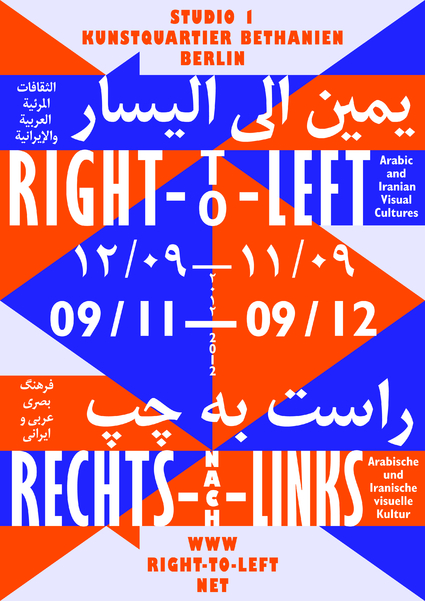EXHIBITION—WORKSHOPS—LECTURES
Curated by: Marina Sorbello and Antje Weitzel (uqbar e.V) / Sascha Thoma, Ben Wittner (Eps51)
Opening: 9.11.2012, 19:00 | Exhibition and events runs until 9.12.2012
Opening hours
: Daily 12:00 - 19:00
| Free admission
For more details on artists and program please check the Khatt Foundation website at: http://www.khtt.net/page/36030/en
or the official site of the event: www.right-to-left.net
The project RIGHT-TO-LEFT comprises an exhibition of contemporary graphic design, as well as presentations, lectures, discussions and workshops with main focus on the Arabic and Iranian contemporary visual cultures.
Before the revolutions that filled the streets in many Middle Eastern countries during the "Arab spring" and the earlier "green movement", another rather quiet revolution had been taking place in the region: that of modernising the Arabic and Persian script, its appearance, and the way it is written thanks to contemporary software and experimental visuals created by a new generation of skilled artists and designers. These "revolutions" are not unrelated, as much of the content and the messages of the Arab upheavals have been amply conveyed through written language, graphics, and illustrations—whether spread in the streets (graffiti, stencils, tags, banners) or through social media and the internet.
